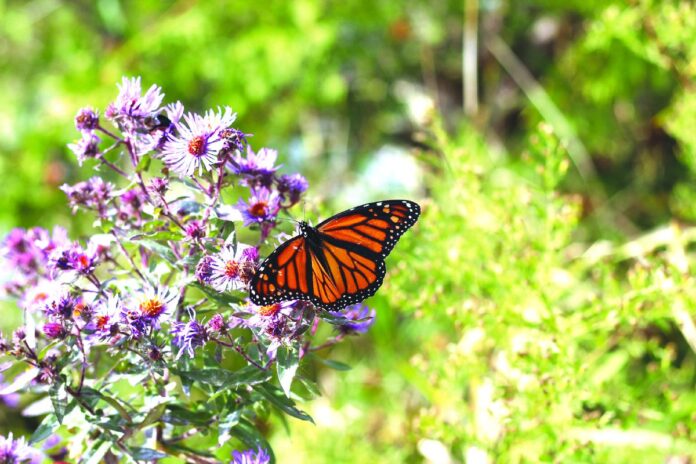ASHLEY GREGORY, Special to the Star
By ASHLEY GREGORY, Special to the Star
A while back I was reading about land fragmentation and how that affected local wildlife.
When we break up land for urbanization we also break up habitats and leave wildlife in isolated areas making them more susceptible to changes in their environment.
Since then I’ve thought a lot about if our landscapes and gardens can play a role in reducing this issue.
While there are many moving parts and variables to consider in the issue of land fragmentation, what it boiled down in to for me were two things: 1. We live in a unique area where this is a real issue for us.
2. Even the smallest areas of habitat can make a difference.
Many people don’t realize how truly unique this area is.
The Lower Rio Grande Valley (LRGV) lies alongside a transition zone between the primarily temperate climate of the United States and the tropical climates of Mexico and Central America.
Additionally, this area is located in the approximate center of the east-west continental gradient of aridity, meaning that the LRGV ranges from dry conditions in the west to those that get progressively wetter as we approach the coast in the east.
Because of this juxtaposition we have a climate that is both humid subtropical and semi arid, with very erratic rainfall.
These one of a kind conditions provide for a broad diversity of animals and plants from both temperate and subtropical climates.
Within the habitat or surrounding areas of the three National Wildlife Refuges in the LRGV there are 19 federally threatened or endangered plant and animals species and 60 state protected species.
Our area is also a primary migration path for many birds and butterflies including some of the most rare migratory birds and the beloved Monarch butterfly.
While I know that habitat gardens in urban areas may not make great impacts for larger wildlife, they can be very beneficial to birds, butterflies and a variety of others insects and smaller wildlife. Amazingly, over 300 species of butterflies and 400 species of birds can be found in the LRGV.
There are also economic benefits to supporting our local wildlife.
In 2006, 4.2 million birders spent $2.9 billion on birding activities and equipment in Texas.
There are the four necessary components for a habitat garden.
Food – to support local wildlife you will need to incorporate some native plants.
Either by creating a specific area for natives or mixing them in with your existing landscape.
Even a small butterfly garden is a good place to start.
The greater plant diversity you have the more species you will attract.
Water – a source of water is important to most wildlife; start small with a bird bath.
Cover – wildlife often need protection from harsh weather or predators; evergreen shrubs can provide nice coverage, especially when mixed in to add layers of vegetation.
Place for raising young – depending on the space you have, this could be dense shrubs or a nesting box or a small pond.
Try to implement sustainable practices in your garden and avoid applications of chemical fertilizers and pesticides unless absolutely necessary.
There is a wealth of information online for creating a wildlife habitat, some good websites to visit are the National Wildlife Federation, Texas Parks and Wildlife, USDA’s Natural Resources Conservation Service and Texas A&M’s Natural Resources Institute.
Ashley Gregory is the Horticulturalist for Hidalgo County with Texas A&M AgriLife Extension Service. She can be reached at the Hidalgo County Extension Office at (956) 383-1026 or by email at [email protected].




